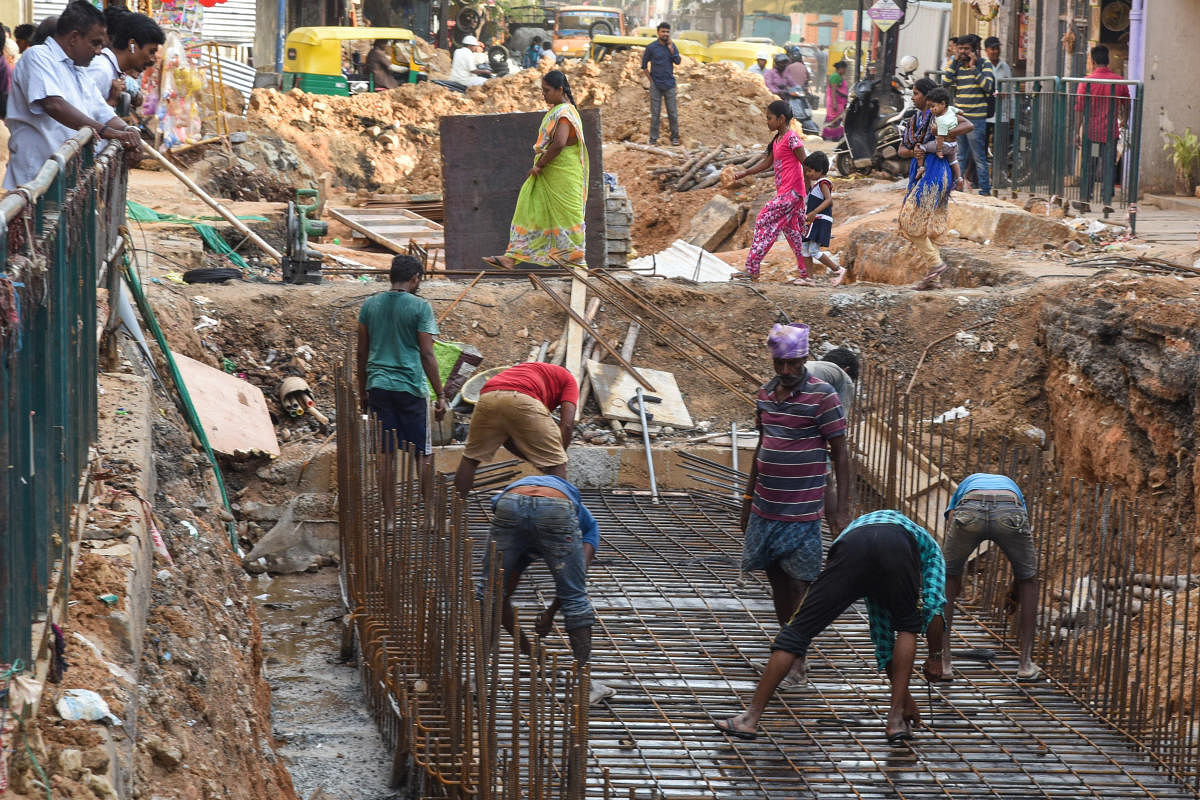
Pedestrian safety has become a matter of grave concern in Bengaluru. Boosting walkability of roads through TenderSURE roads has been a model to address this, although it is nowhere near being called a perfect solution. Yet, with vehicle numbers exceeding 80 lakh, it is time for walkers to reclaim their road space.
Many civic experts in the city believe that the Metro and the Public Bicycle Sharing (PBS) concepts as seen in the West can reduce traffic and vehicle-triggered chaos on the city streets. This, they are convinced, can reduce the threat for pedestrians in the Central Business District (CBD) even if the question of last-mile connectivity still remains a challenge.
The Bruhath Bengaluru Mahanagara Palike (BBMP), despite its flaws in implementing other civic works, has been making some progress on the TenderSURE project.
Dissenting voices
But there has been opposition by various public groups over the marginal spending on the TenderSURE footpaths and snail-paced progress of the work. The Palike is now all set to take up the works in the CBD along 25 kms of roads under the Smart City Mission.
With this, 60 major roads will now see TenderSURE upgrade, where economic activity is recorded to be more. These are also roads that witnesses the most pedestrian activity.
Twenty four roads are now being taken up for upgrade. The money will come from two financial years’ allocations under the Nagarothana funds announced in 2016-17 by the Siddaramaiah-led government.
However, the BBMP’s poor record in finishing the works on time has invited criticism from various quarters.
Initial phases
Proposed several years ago, TenderSURE had first got approval from the BJP-led government in 2012-13. On the agenda was upgrade of 12 roads. But funds allocation did not materialise due to the political crisis during that year. However, Siddaramaiah’s 2015-16 budget carried it forward, allowing for the completion of 11 roads.
The total length was 13 kms. BBMP commenced work in 2016 on Residency Road, Richmond Road, St Marks Road, and Vittal Mallya Hospital Road in the first phase. Later, the civic body took up Nrupatunga Road and a part of K G Road. Last year, Church Street was upgraded with a cobble-stone surface.
Second grants for the project under Nagarothana were announced in 2016-17, and BBMP was to take up another 12 roads. Of these, the Palike is now carrying out the work on six roads near the Majestic area, where the pedestrian movement is said to be about 13,000 people per hour.
Shifting utilities
Work is now progressing on Subedar Chatram Road, W H Hanumanthaiah Road, Dhanavantri Road, roads around Gandhinagar, and Gubbi Thotappa Road. The pace is slow as the Palike is finding it tough to shift utilities, some of which are 30 years old. The agency has no idea of the Bescom and BWSSB connection network, making things worse.
The work is expected to be completed only after six months. Meanwhile, under the second phase of the 2016-17 grants, BBMP has started the work on Siddaiah Puranik Road, Jayanagar 11th Main Road, Margosa Road, Museum Cross road, K G Road (from Mysore Bank Circle to Upparpet junction) and Palace road. These works are scheduled to be completed in another nine months.
Incomplete works
However, the more the number of roads that BBMP took up for upgrade, the more was it criticized by the public. Reason: They were all convinced that the Palike should have taken up more roads only after completing the previous works.
BBMP is yet to complete the work allotted under two grants by the previous governments. But it has now awarded the contract for the same work along 36 major roads of the city under different packages linked to the Smart City mission. Brigade Road is among the roads listed under this project. This road was earlier dropped in Phase-2 grants of the project.
Raghavendra Prasad, Superintendent Engineer, Bengaluru Smart City Limited, explains: “Both the works are awarded to finalised bidders and work will begin in a month. We believe that the work will be completed in 12 months of time.”
OFC, Bescom cables
BBMP officials contends that the work completion gets delayed and the costs escalate for valid reasons: The work involves remodelling of drains, shifting utilities of electricity and water boards, constructing duct for the OFC cables and uniform carriageway that will provide wider pedestrian space.
On the TenderSURE upgrade process, BBMP Commissioner N Manjunatha Prasad had this to say: “The TenderSURE footpaths ensure last mile connectivity as they promise wider space for pedestrians. This also ensures safety. With wider footpaths, there is less vehicular obstruction for pedestrians.”
Walkability boost
K T Nagaraj, Chief engineer, Project Central, BBMP, agrees that TenderSURE roads consume more money and time compared to other roads. Utility shifting, permissions from traffic police and other factors contribute to the delays. “But once the footpath is completed, it will give good walking experience,” he says.
Yes, the upgraded roads look better visually. But what about maintenance? Broken bollards, leaking utility lines and poor integration of underground pipelines of the old roads raises questions of below par upkeep.
Just an year old, Church Street shows clear signs of wear and tear without proper maintenance. This is a trend the Palike cannot afford to ignore if its intention is to boost walkability.